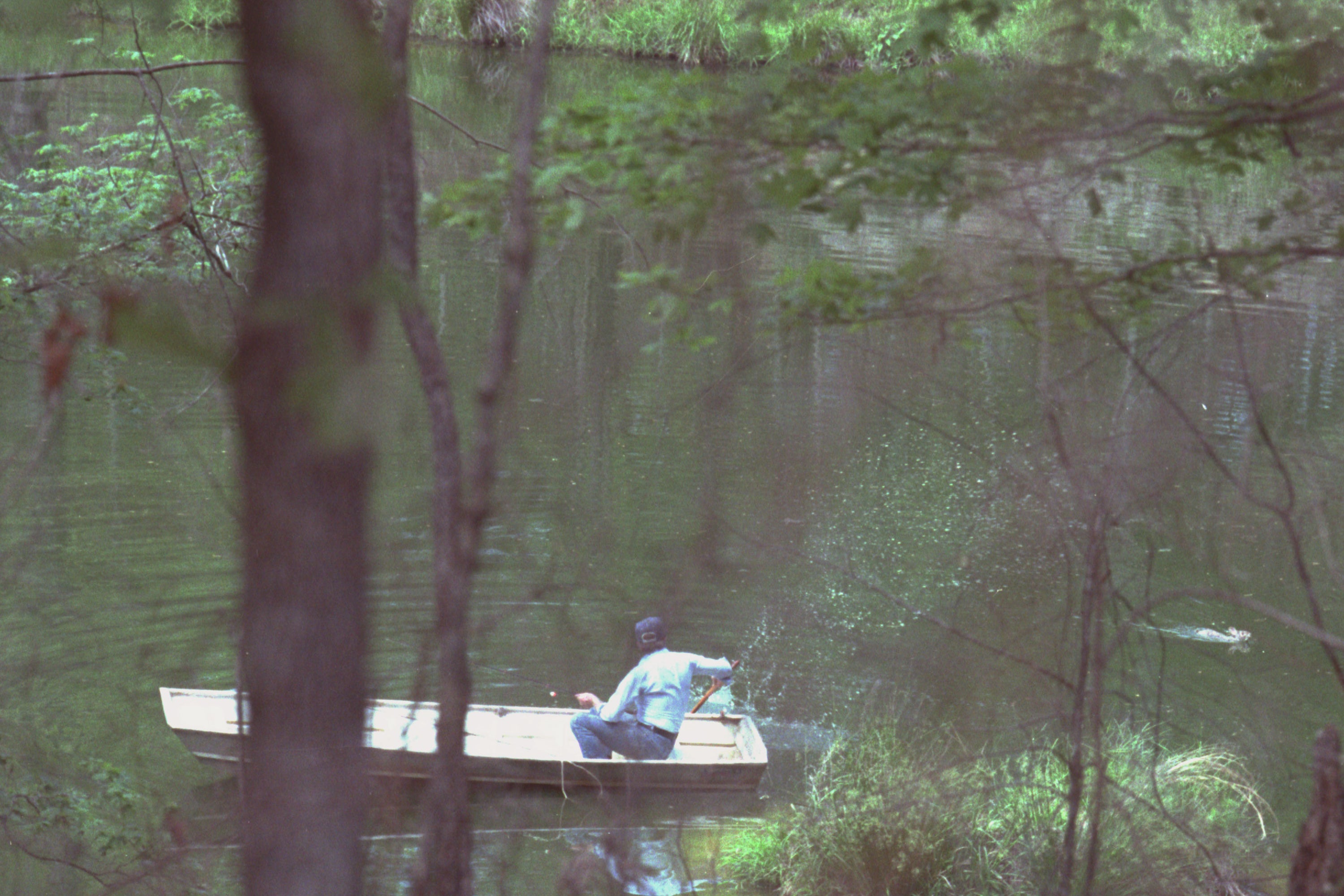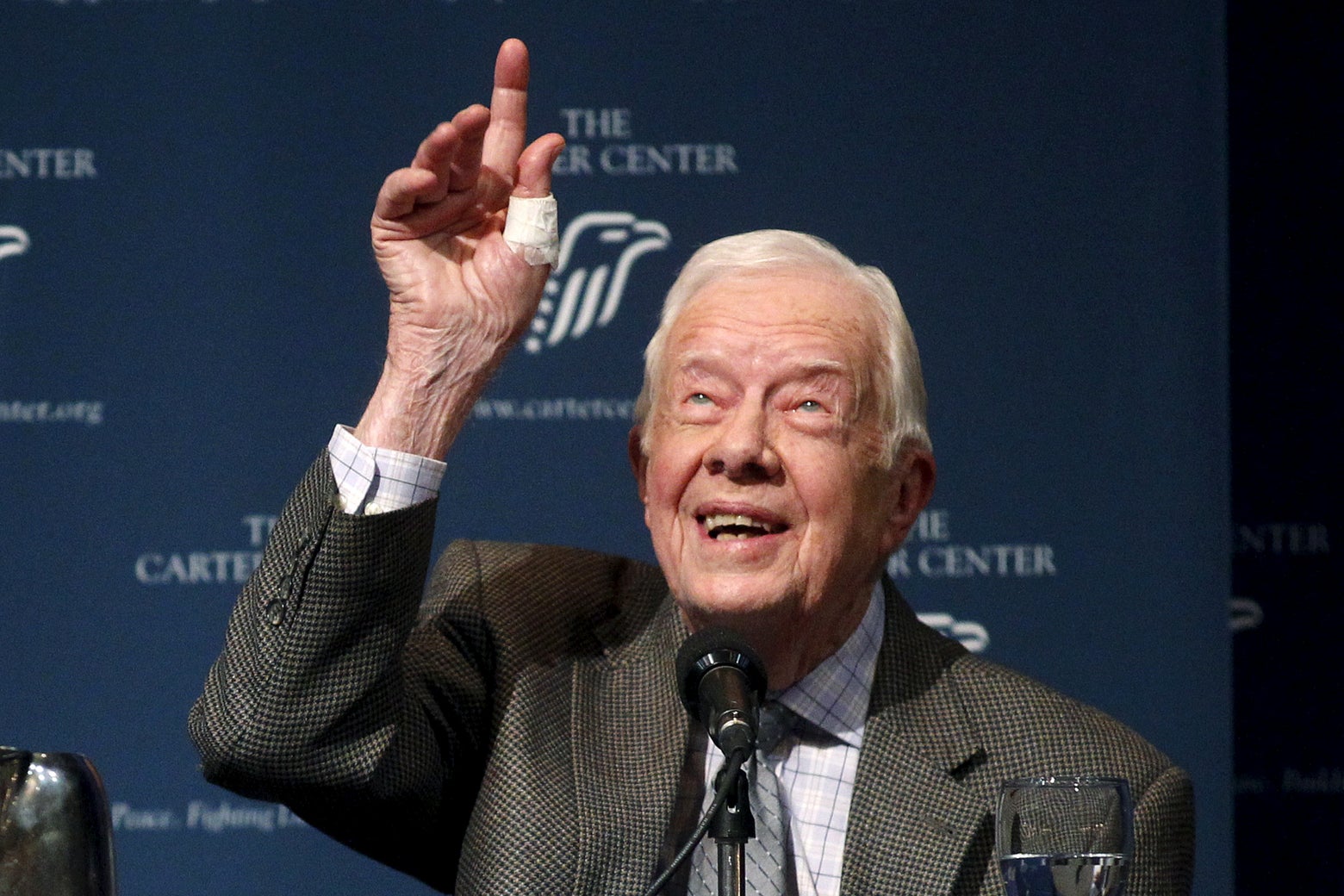Things were rough in the last two years of Jimmy Carter’s presidency. In the final months before he lost his reelection bid to Ronald Reagan, “the economy was in shambles, oil prices skyrocketed, Americans were held hostage in Iran, and the Soviets invaded Afghanistan,” political historian Julian E. Zelizer recounts in the opening chapter of his biography Jimmy Carter.
The “tip of the iceberg” for this string of disasters, Zelizer writes, was what came to be known as the “killer rabbit” incident, in which a “banzai bunny” (as the Associated Press described it) attacked the president in a fishing pond at Carter’s farm in Plains, Georgia. The incident became a symbol of his failing presidency—a narrative-defining moment that, in retrospect, looks like a preinternet predecessor to the kinds of viral froth that now dominate our political news cycles.
The story itself is quaint by today’s standards: In August 1979, White House press secretary Jody Powell leaked a ridiculous story to the AP about Carter’s being confronted by a “berserk”-looking rabbit while fishing in a small boat in the pond on his farm. The “killer rabbit,” as an anonymous aide (likely Powell) described it to the AP, approached the president, “hissing menacingly, its teeth flashing and nostrils flared,” until Carter splashed at it with his paddle. When Carter told this story to his aides and friends from Georgia, they didn’t believe him because “rabbits don’t swim.” So he had a photo of the rabbit enlarged to prove his case.

Newspapers went wild with the story. The AP sent it out with a cartoon reenactment of the scene that showed a terrified-looking Carter swatting desperately at a raging human-sized bunny. The piece, often accompanied by the AP drawing or other caricatures, was syndicated across the country with headlines like “ ‘Banzai Bunny’ Attacks Carter on Fishing Trip,” “Carter Had to Fight Off Swimming Bunny,” and “Carter Provides Proof of ‘Killer Rabbit’ Attack.” (An even more Onion-esque follow-up headline read: “He Didn’t Beat Bunny, Carter Says.”) The Washington Post ran the AP story on its front page with the headline “Bunny Goes Bugs: Rabbit Attacks President,” along with its own cartoon re-creation, titled “Paws,” in a nod to Jaws. In the era before the dawn of cable, the story ran on all three national network news broadcasts.
The Post became especially obsessed with the killer bunny, running a satirical editorial and using it in coverage of the Washington NFL team. (“What Jimmy Carter needs, clearly, is the New York Giants for an opponent,” Post columnist Dave Kindred wrote after Washington’s fans held up a banner comparing their lackluster team with the president, and the even-worse Giants to the bunny.) Conservation group Defenders of Wildlife tried to get its own publicity out of the incident by putting out a jokey “seven-point program to improve the government’s sensitivity to wildlife.” There were rumors that Jerry Falwell saw the rabbit as “a tool of Satan,” as biographer Kevin Mattson described in his book “What the Heck Are You Up To, Mr. President?” And folk singer Tom Paxton wrote a novelty song, called “I Don’t Want a Bunny Wunny,” sung from the perspective of Carter (“I don’t want a bunny wunny/ In my widdle ol’ boat/ In my widdle ol’ boat in the pond”).
In the years since, the story has become a symbol among historians of Carter’s disastrous last 18 months in office—and, to some, a symbol of the sometimes frivolous and arbitrary attacks against Carter’s presidency.
In a 2014 piece looking back on the incident, WNYC’s Jim O’Grady said that the rabbit flap was as personally damaging as any of the other crises Carter faced in 1979, crystallizing the “sense that Carter was a man in over his head.”
“What seemed like little more than comic relief held enormous ramifications,” wrote Mattson in his 2009 book. “What this little event really suggested was something larger: The president was now stereotyped as a weakling, incapable of handling a crisis, let alone a small animal.”
In his extremely critical book The Real Jimmy Carter: How Our Worst Ex-President Undermines American Foreign Policy, Coddles Dictators and Created the Party of Clinton and Kerry, even conservative author Steven F. Hayward acknowledged that “the story took on symbolic significance far out of proportion to its merits.”
But what we should really take away from the “killer rabbit” incident is not just the image of Carter swatting haplessly at a gregarious burrowing rodent. It’s that he handled it with the charm and self-deprecating humor that would be an asset to him in his successes as president and in his life after the presidency. “It was a fairly robust-looking rabbit who was swimming, apparently with no difficulty,” Carter said in his own deadpan account in 1979. When he tried to get in, “I determined this would be an unpleasant situation for me and the rabbit.” The original point of the whole story was to make people laugh. All things considered, it may have worked too well.


